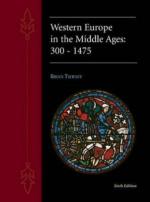|
This section contains 1,952 words (approx. 7 pages at 300 words per page) |

|
Barter. The earliest medieval method of economic exchange for trader and nontrader alike was barter. The markets for the early trader were largely the feudal village and the manor household. Their internal economy was based on service and duties, not on payments of money. Goods that had to be secured outside the village or manor were few in number, and they could usually be procured in direct exchange for agricultural products. Even trade for some of the most prized items, salt and iron, occurred most widely by barter throughout the Middle Ages. Indeed, without money as the medium of an exchange, serving as a standard of value for whether an item had sold for more than it was purchased, it was perhaps more difficult for a medieval trader to determine whether he had gained in a single transaction...
|
This section contains 1,952 words (approx. 7 pages at 300 words per page) |

|




